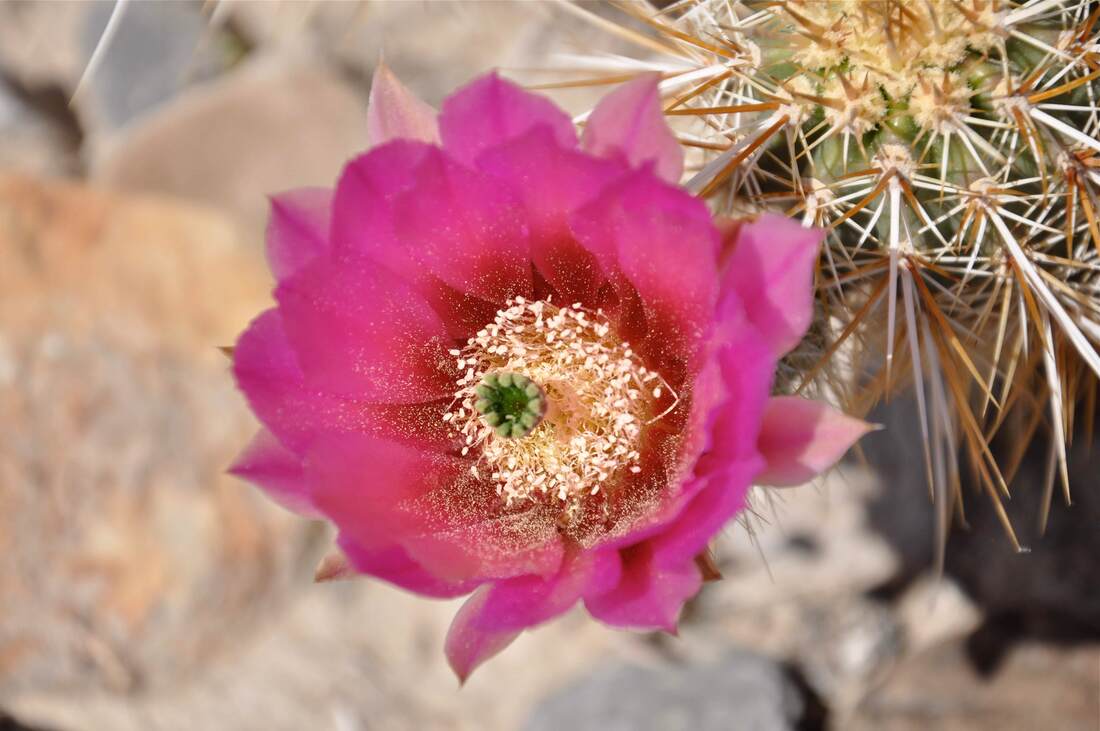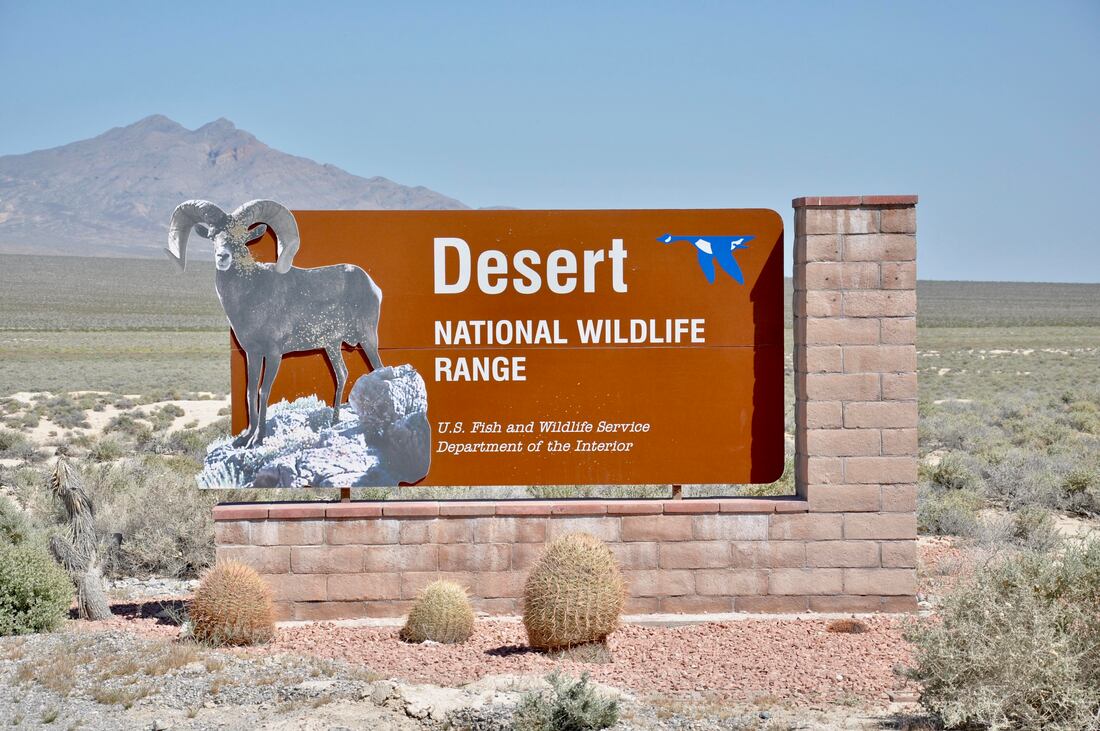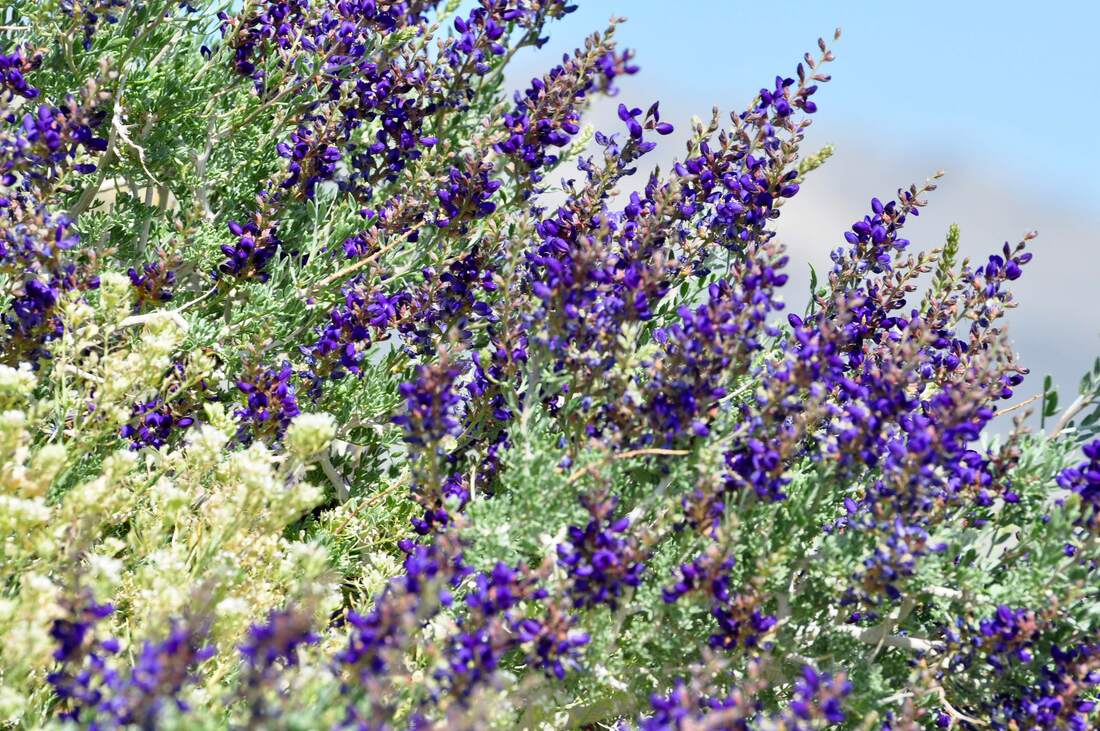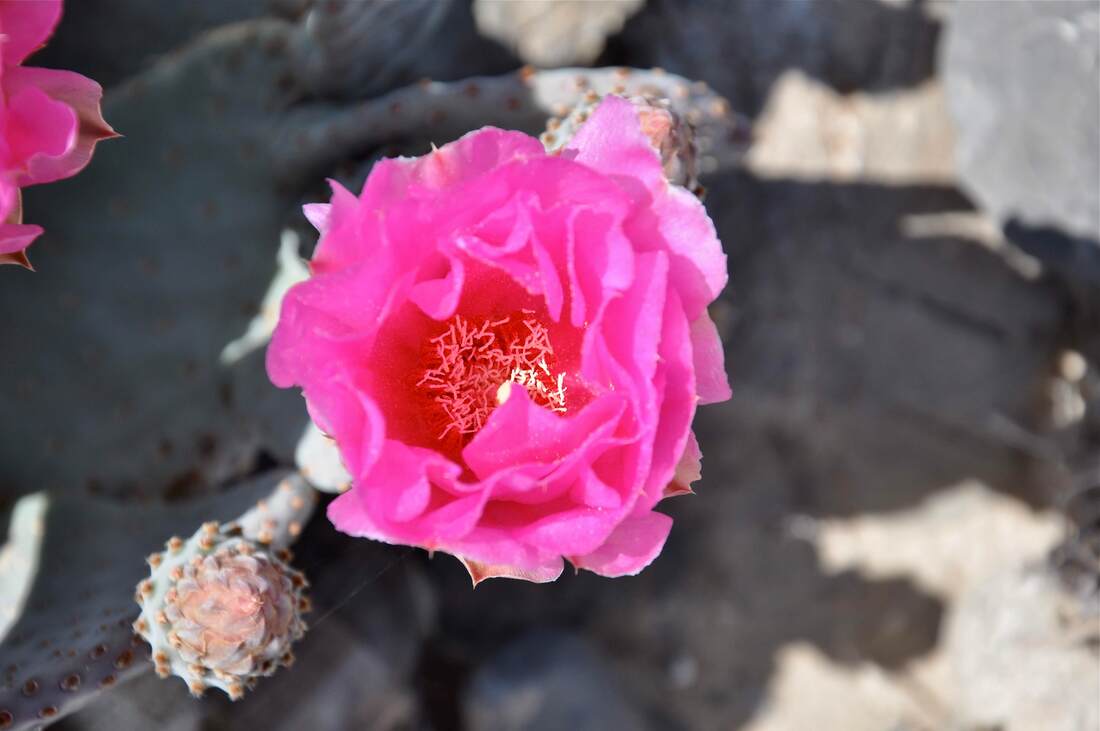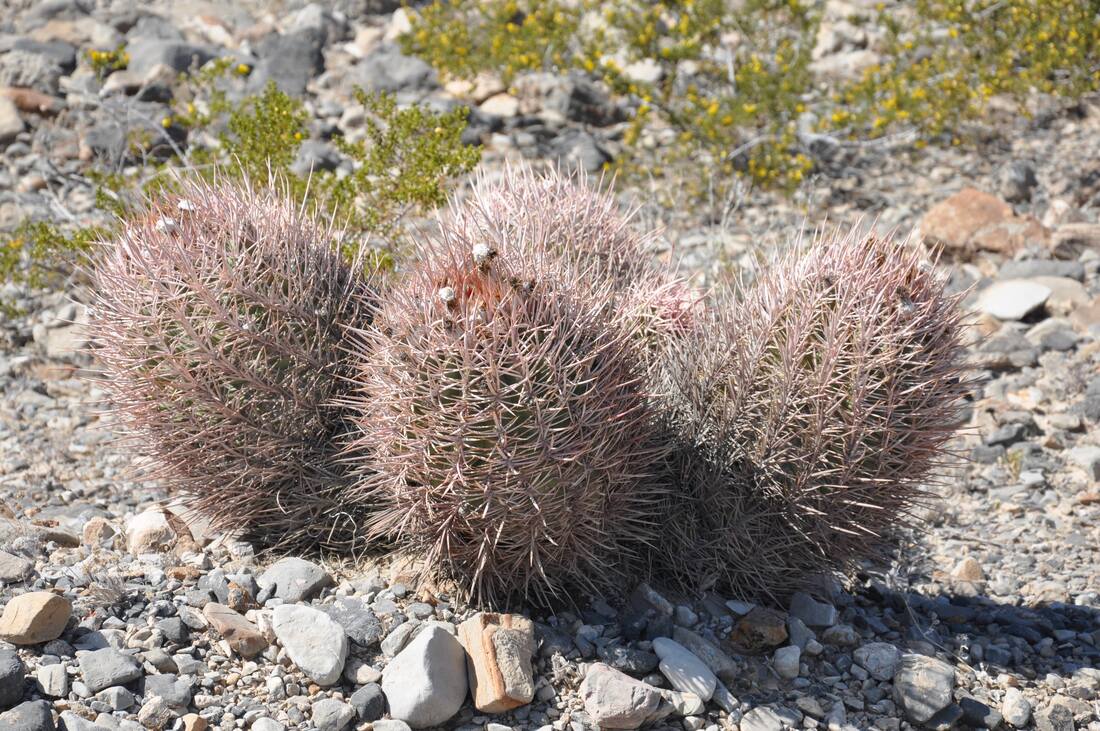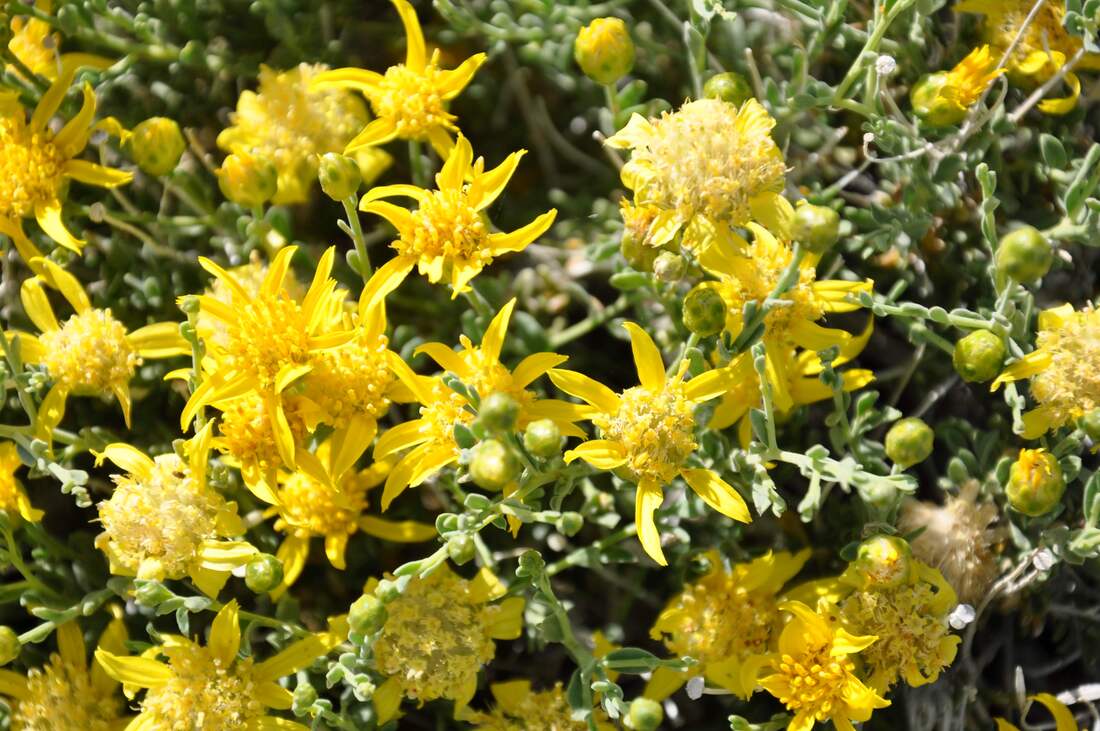|
There are many good places to go see desert wildflower blooms, but only a few are located along the paved roads. Those who drive a high ground clearance vehicle or a 4×4 will have an advantage when venturing into the great outdoors to see the bright colors of spring in the desert. Some of the desert dirt roads are smoother than others, so doing a little bit of road condition research ahead of time will save a few headaches. Flash floods are the most common reason for dirt road closures in the desert, which was the case with Alamo Road during my visit. The dirt road was closed due to flooding near the endpoint in the Pahranagat National Wildlife Refuge, so doing a round trip sightseeing tour was the only option. From March through May the desert wildflower blooms can be seen nearly everywhere in southern Nevada, but the amount of rainfall or drought during the winter can effect the duration and intensity of the wildflower bloom season. After a dry winter, the wildflower bloom is minimal and the flowering cycle ends quickly as the outdoor temperatures rise. Cactus will continue to bloom till some time in June during a dry year, but there will be far fewer cactus flowers to see. After a wet winter season, the desert wildflower season can start even before the first day of spring arrives and it will keep going strong till the outdoor temperatures rise into the triple digit range. As the temperatures rise, the less hearty plants revert to their hot summer survival mode and the flowering cycle tapers off, while the heartier cactus wildflower blooms can continue to flourish well into July. A indicator of how prolific the cactus wild flower blooms will be is to look at how plump the cactus is. For example, after a very dry winter a Paddle Cactus can be as thin as cardboard, while after a wet winter the same Paddle Cactus can be thicker than a hearty mountain man size pancake. The thicker and plumper the cactus, the more water the plant stored during winter and the more energy the cactus will have to produce blooms when the daylight hours start to get longer. After a wet winter, it is not uncommon to see dozens of colorful blooms on one single small cactus! The best places to view a vast sea of colorful wildflowers in the Desert Southwest tends to be in the 3,000 to 4,500 foot elevation range on mountain slopes or meadows where Yucca and Joshua Trees grow. The canyon floors and mountain dry wash ravines always yield spectacular spring wildflower blooms after a wet winter too. Areas where mountain snow melt seepage occurs in the lower elevations are also a good choice. One of the best places to see desert wildflower blooms is at the Desert National Wildlife Range. The Corn Creek access road is located on U.S. Highway 95 about 20 minutes north of Las Vegas, just past the Snow Mountain Paiute Territory. There are two very long main dirt roads that run through the vast Desert National Wildlife Range wilderness area. Mormon Well Road runs 47 miles through the mountains north to Highway 93 and this road can be very rough. Alamo Road runs along the northwestern border of the Desert National Wildlife Range all the way to the Pahranagat Wildlife Refuge in Alamo, which is about 78 miles. Either of the two main roads are good for spring wildflower viewing, but Alamo Road offers a more favorable elevation for cactus blooms. All along Alamo Road there are plenty of wildflower blooms and the wide range of bright colors are amazing to see! Purple Sage, yellow Creosote flowers, burgundy color Yucca, fruiting green Joshua Tree clusters, Orange Mallow Globe and dozens of other desert ground cover blooms can be seen when touring Alamo Road going north, even when only cruising a short distance to Joe May Road which is only about three miles from the visitors center. Traveling onward to the Hidden Forest Road intersection will reveal more delicate flowers associated with higher elevations. The Joshua Tree forests are thicker in this section too. The cactus flowers that can be seen along this stretch of Alamo Road are definitely the star of the show and there are a wide variety to see. Several Beaver Tail Cactus varieties thrive in this area and each seems to have its own shade of pink flower. The intense hot pink blooms of Hedge Hog Cactus and the waxy green flowers of the Cholla are easy to marvel over. If a visitor is really lucky, the red and yellow Barrel Cactus blooms will appear too. An important item to keep in mind is that Alamo Road borders upon the Nellis Air Force Base Bombing Range and the old Nevada Atomic Test Site is also next door. The no trespassing-high security signs are the only barriers in this area, so in order to keep from getting bombed or arrested, it is best to heed the warnings. This entire region was saturated with nuclear bomb radioactive fallout during the above ground atom bomb tests, so doing some rock collecting may not be a good idea. On windy days, it is advisable to wear a dust mask in this region for the same reason. Other than the bombing range and some residual radioactive fallout, the Alamo Road section of the Desert National Wildlife Range is as picturesque as can be! On a sad note, the Air Force is currently trying to seize a large section of the Desert National Wildlife Range to expand their own bombing range, which is ridiculous when looking at how much land this military facility already covers. The expansion will threaten the endangered Bighorn Sheep habitat and the general public will lose some of the most beautiful wildflower viewing areas on earth. There are environmental preservation organizations and petitions to stop the Nellis Air Force Base Bombing Range expansion, so feel free to look into this controversial matter and show some support for the cause. When visiting the Desert National Wildlife Range, be sure to bring a good camera, because the photos of the bright color cactus flowers will certainly be a soothing slideshow to marvel over for years to come. This is a beautiful desert landscape for viewing spring wildflower blooms and there are many lesser know destinations in this wilderness area where few others go. Doing the three mile tour on Alamo Road to Joe May Road or the longer trek to Hidden Forest Road most definitely is a good place to start!
0 Comments
Your comment will be posted after it is approved.
Leave a Reply. |
Leave no trace!
New!
Destination West YouTube channel! https://www.youtube.com/@DestinationWestOrg *The Destination West website upgrading project is well underway. Unique YouTube slideshows are replacing the outdated Flickr photo galleries. The new videos feature modern graphics and alternative music instrumentals that enhance the viewing experience. Some articles are being condensed, while others are getting much needed edits. As everybody knows, the bulk of the original articles and photos were published on the fly during the Covid camping venture and there were limitations. Upgrading is the way to go and more articles will receive a makeover each week until this project is completed. After that, I will be able to gather new material. There is light at the end of the tunnel!
JD Lane Archives
July 2024
Donations help the Destinaton West project continue into the future!
Go Fund Me! This website uses marketing and tracking technologies. Opting out of this will opt you out of all cookies, except for those needed to run the website. Note that some products may not work as well without tracking cookies. Opt Out of Cookies |
